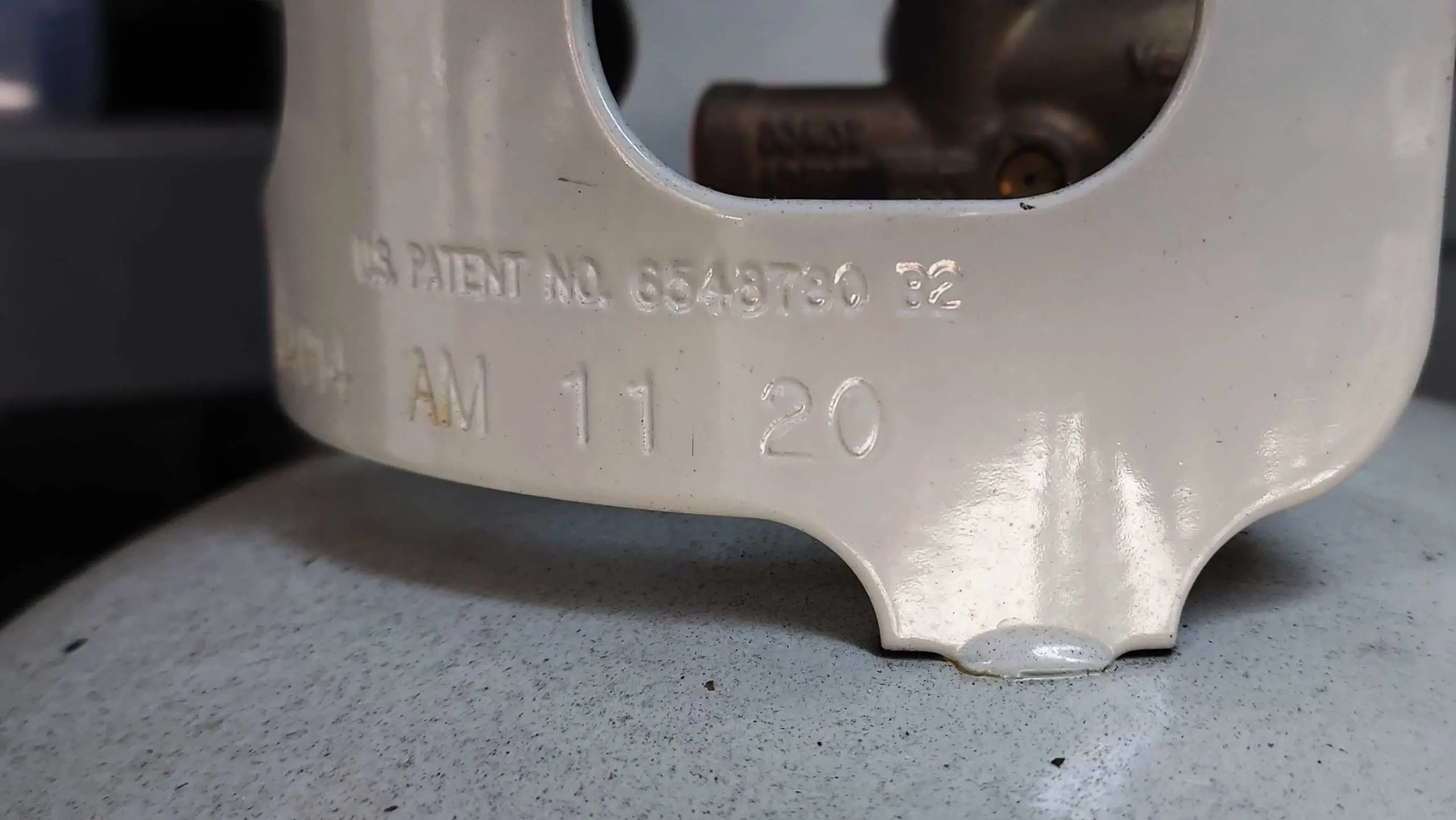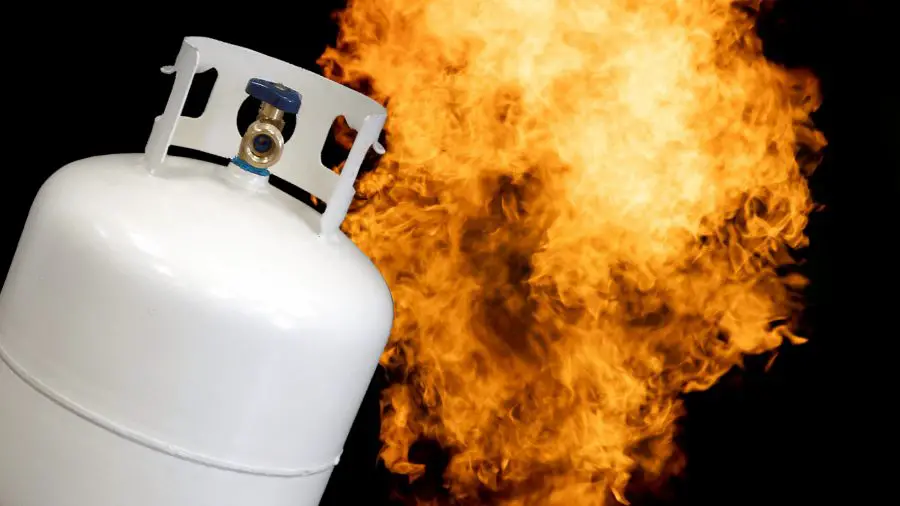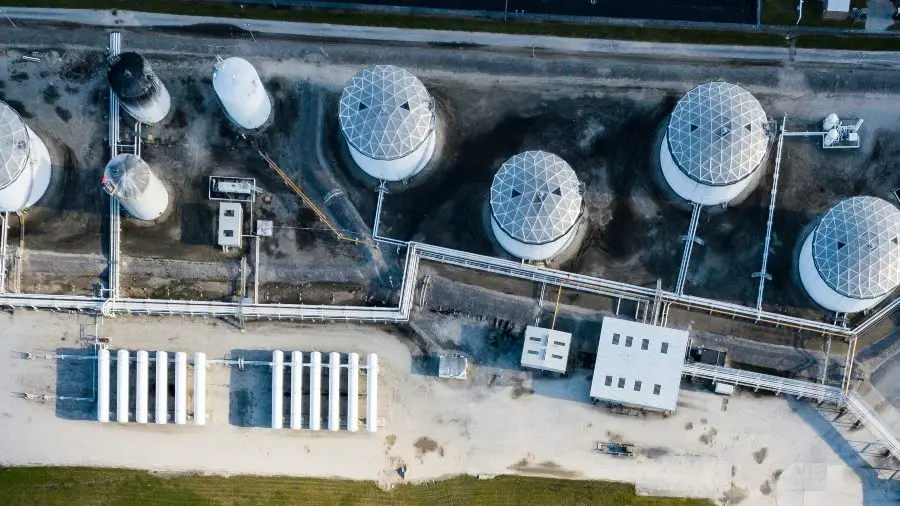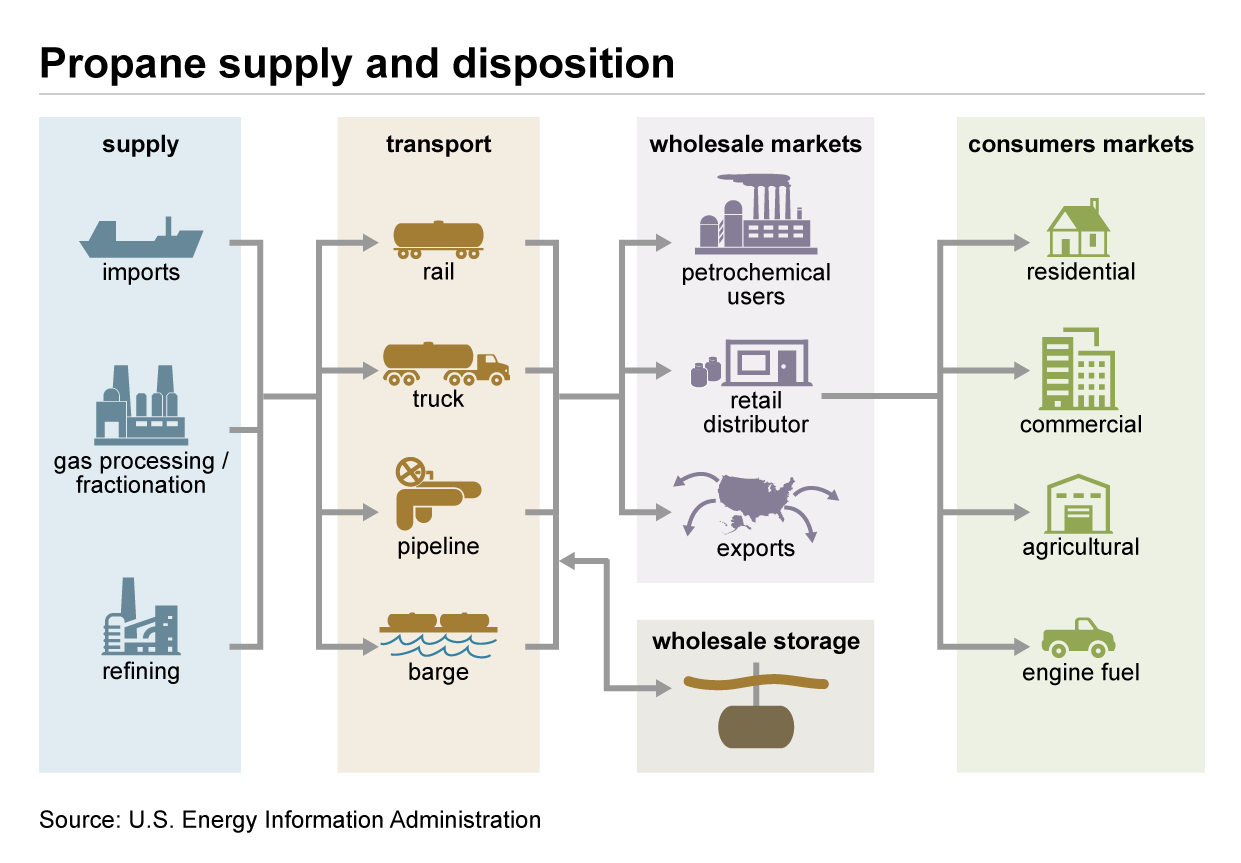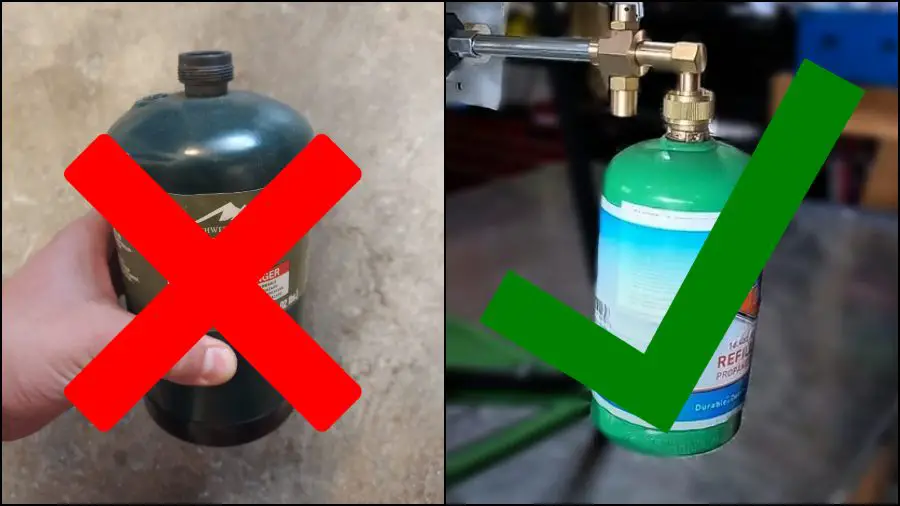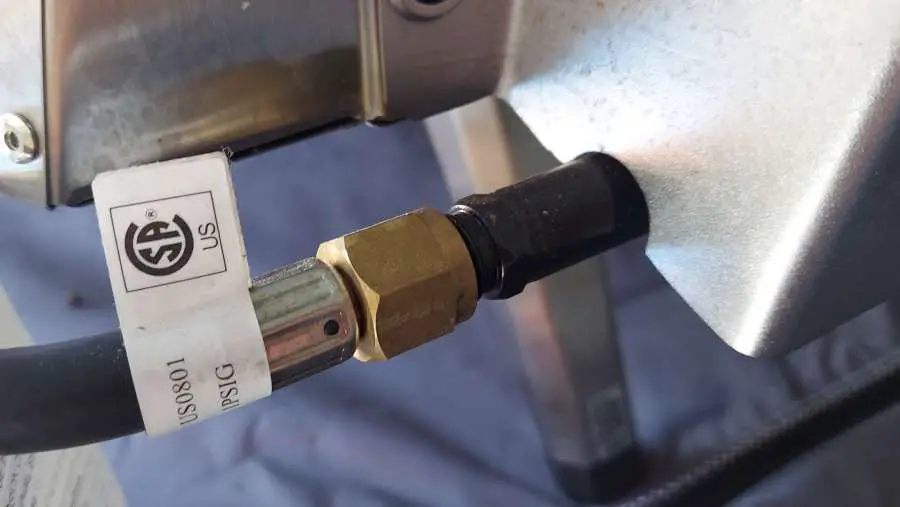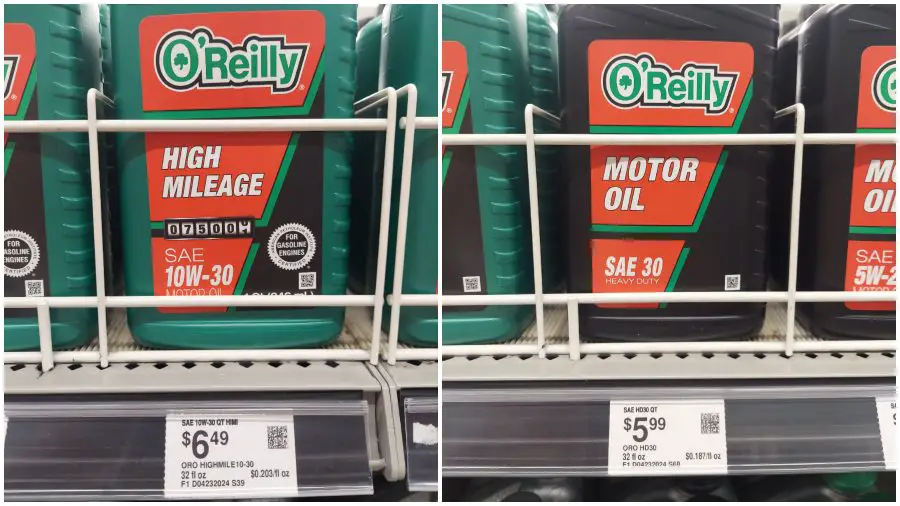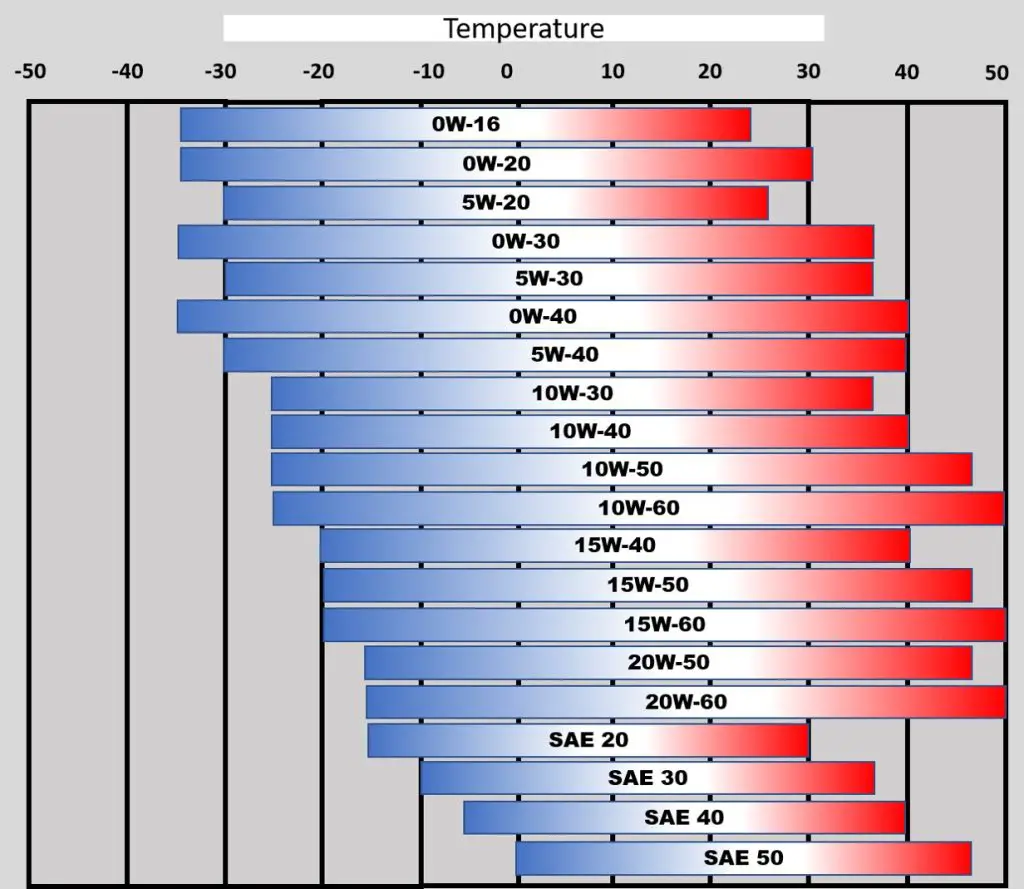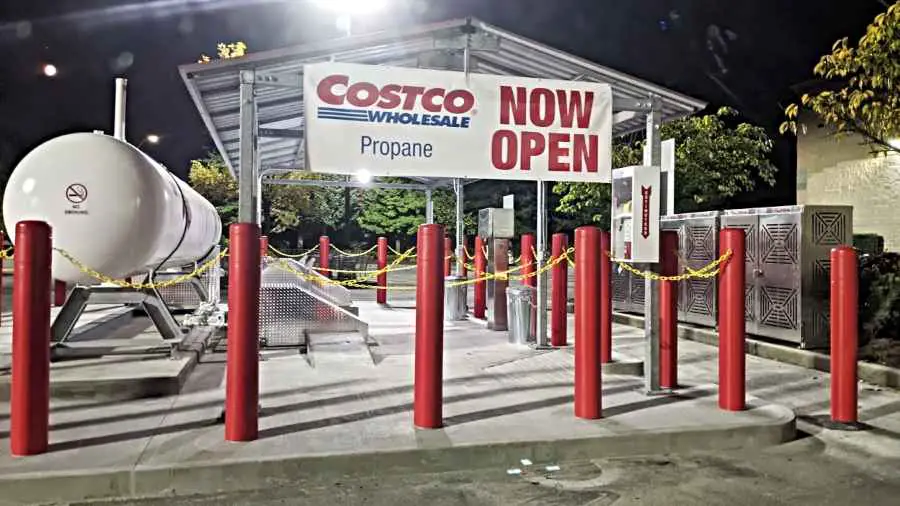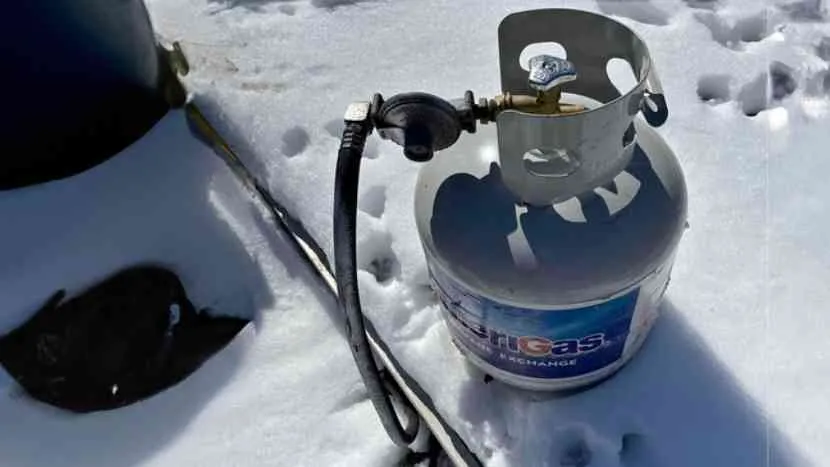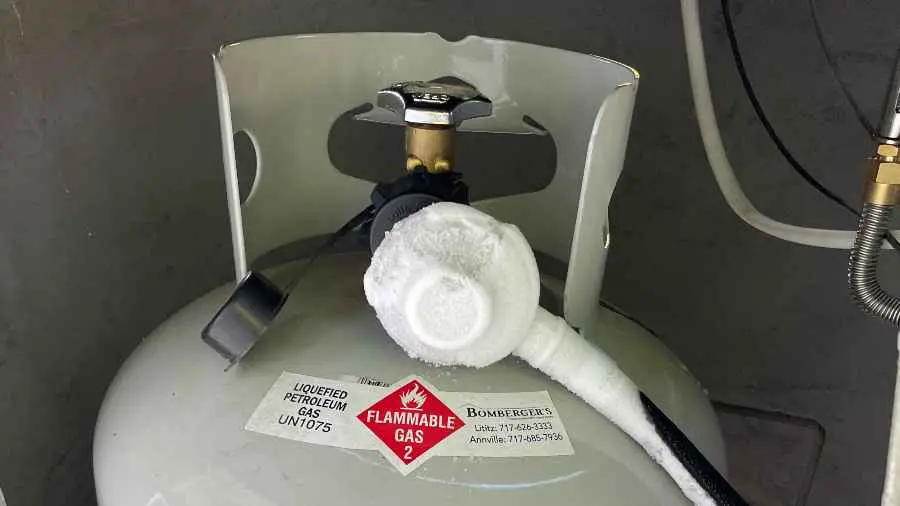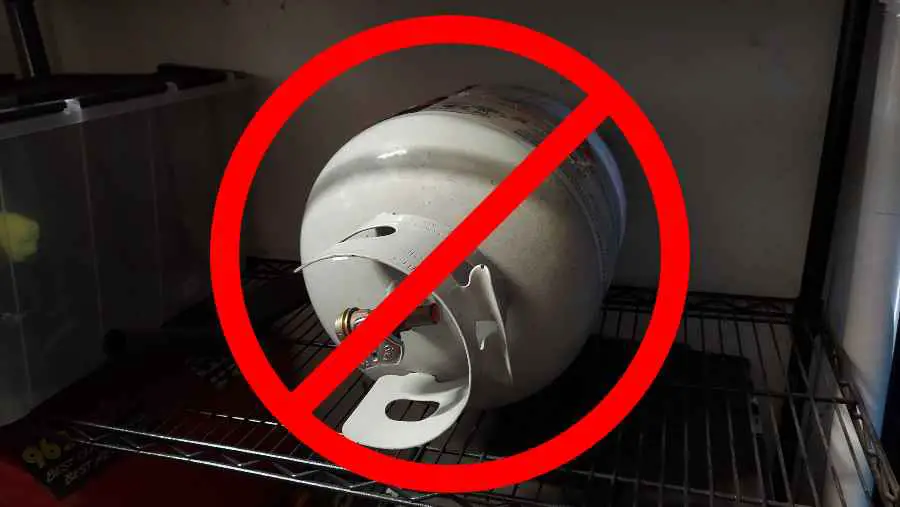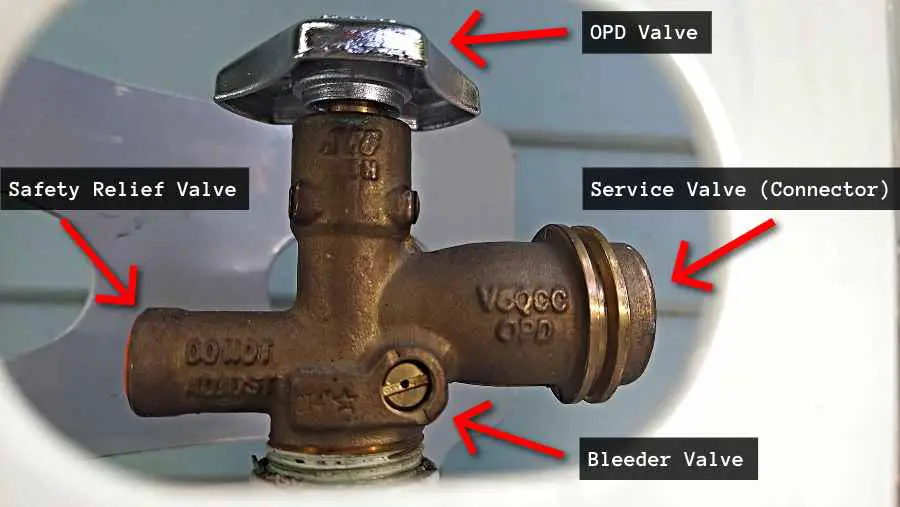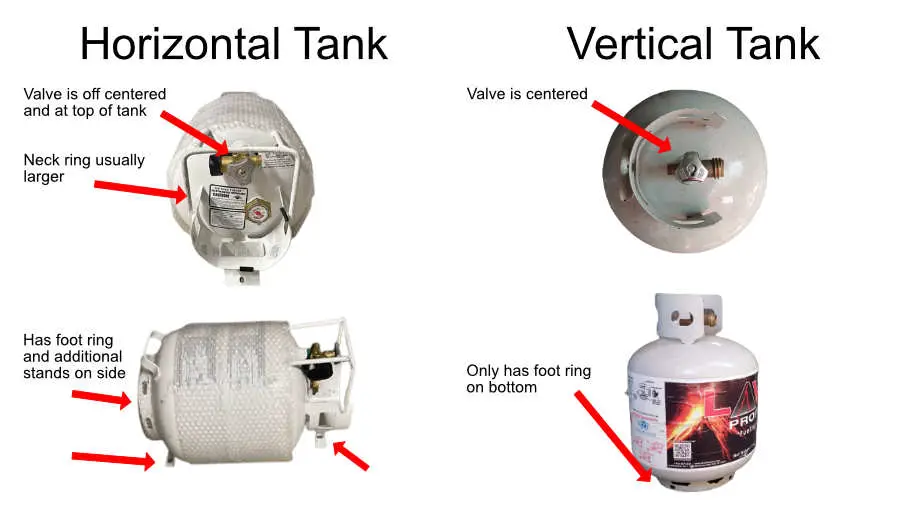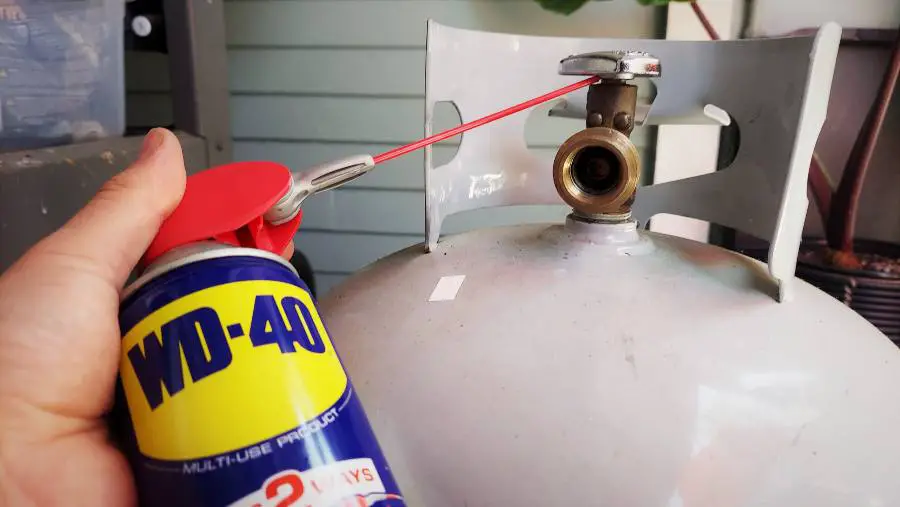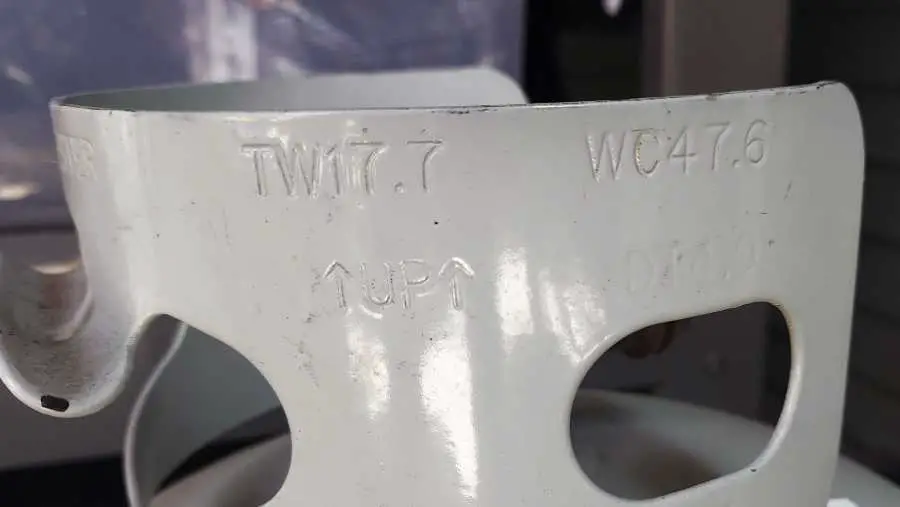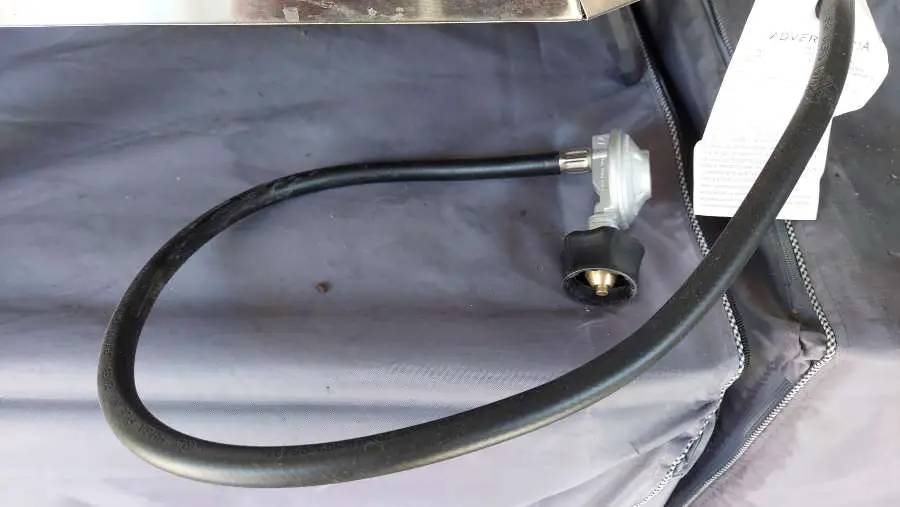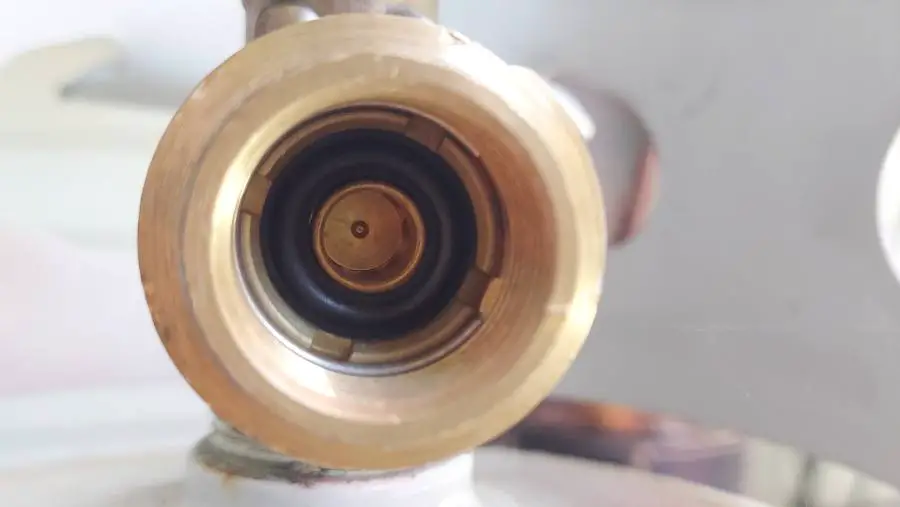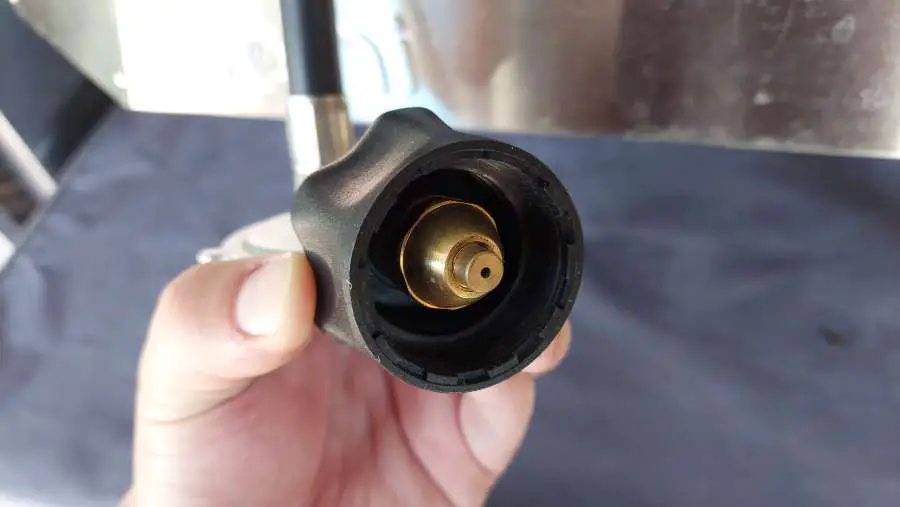Costco is an excellent store for saving money and buying in bulk. Depending on your location, some Costcos offer various services such as Optometry, Pharmacy, Oil Changes, Gas Stations, and more. So you may be wondering, does Costco offer propane services too? Can you refill a propane tank at Costco or have one exchanged?
Well, good news. Costco offers propane refilling at select locations. Out of the ~700 Costco locations, 100 offer Propane services, specifically refilling. While you won’t be able to exchange a propane tank, you can have your tank refilled at these locations, and most locations sell empty propane tanks. Almost all of these locations are located in Canada, so if you’re located in the United States, you’ll want to call your local store to confirm if they refill propane or not.
Below is an interactive map showing all Costco locations that offer propane services.
As I mentioned at the beginning of the article, most Costco locations do not offer propane services. Out of the 700 locations listed on their website, only 100 offer propane services. While some stores do not list propane as a service on their store details page, they may still have propane services. If you do not see your store listed on my verified locations list, it is still worth calling and asking if they offer propane services.
Refilling your propane tanks at Costco is easy, but make sure you have a membership with Costco as you’ll need one in order to have your tanks refilled or purchase new empty ones. Double-check with your location before heading there to ensure they have propane available for refilling your tank.
The propane refilling station is typically located outside near the gas station or Tire Depot, or somewhere in the parking lot. You can identify it by the large white propane tank, typically surrounded by red barriers, as pictured above. The propane refilling station will never be inside a warehouse, so do not take your propane tank inside.
Having your propane tanks refilled at Costco is very easy. Simply follow the steps below:
Make sure when you’re traveling with propane tanks, regardless if their empty, to follow basic propane transportation safety. Always make sure the valve is fully closed, and to secure the tank as well as store it in a well ventilated part of the car. Never leave propane tanks in the car for long periods, in high heat, or with the windows up. Never smoke near propane tanks.
Costco propane prices will depend on your specific location, however, most stores refill propane for ~$2.40/gal. This means if Costco fills your entire tank up, which they only fill to 15 lbs (3.7 gallons), it will cost you a total of $8.88 before tax.
Because Costco fills your propane tanks up and doesn’t exchange them, you can bring any brand of propane tank at any fill level. You will only be charged for the amount of propane you get.
Similar to Blue Rhino and Amerigas, Costco only fills their propane tanks to 15 lbs. While this is unfortunate, as they can legally fill it to 20 lbs, the price is still one of the best you’ll find for propane refills.
Are you looking for a Costco propane refill station near you? In total, there are 100 stores that are verified to offer propane services. Below is a list of all locations that have Propane listed as a service on their location details page at Costco.com If you do not see your store on this list, it is still worth calling and checking directly with them.
Click on a state below to jump to that section, or scroll down to see all locations.
Alabama
Mobile #1192
Address: 1450 TINGLE CIRCLE WEST, MOBILE, AL, 36606-2632, US
Phone Number: (251) 308-7030
Services Offered: Food Court, Gas Station, Hearing Aids, Optical Department, Pharmacy, Tire Service Center, Propane
Huntsville #356
Address: 1205 N. MEMORIAL PKWY, HUNTSVILLE, AL, 35801-5930, US
Phone Number: (256) 519-2220
Services Offered: Food Court, Gas Station, Hearing Aids, Optical Department, Pharmacy, Tire Service Center, Propane
Alberta
Okotoks #1069
Address: 202-104 SOUTHBANK BLVD, OKOTOKS, AB, T1S 0K4, CA
Phone Number: (403) 995-5150
Services Offered: Food Court, Gas Station, Hearing Aids, Optical Department, Pharmacy, Tire Service Center, Propane
Rocky View #1076
Address: 300-293020 CROSSIRON COMMON, ROCKY VIEW COUNTY, AB, T4A 0J6, CA
Phone Number: (403) 516-5050
Services Offered: Food Court, Gas Station, Hearing Aids, Optical Department, Pharmacy, Tire Service Center, Propane
St Albert #1157
Address: 1075 ST ALBERT TRAIL, ST. ALBERT, AB, T8N 4K6, CA
Phone Number: (780) 544-2000
Services Offered: Food Court, Gas Station, Hearing Aids, Optical Department, Pharmacy, Tire Service Center, Propane
Nisku #1270
Address: 2584 46TH AVE EAST, EDMONTON INTERNATIONAL AIRPORT, AB, T9E 1K2, CA
Phone Number: (825) 319-2061
Services Offered: Food Court, Gas Station, Hearing Aids, Optical Department, Pharmacy, Tire Service Center, Propane
SW Calgary #1381
Address: 12905 BUFFALO RUN BLVD, TSUUT’INA, AB, T3T 0E3, CA
Phone Number: (587) 441-8180
Services Offered: Food Court, Gas Station, Hearing Aids, Optical Department, Pharmacy, Tire Service Center, Propane
Lethbridge #160
Address: 3200 MAYOR MAGRATH DR S, LETHBRIDGE, AB, T1K 6Y6, CA
Phone Number: (403) 320-8917
Services Offered: Food Court, Gas Station, Hearing Aids, Optical Department, Pharmacy, Tire Service Center, Propane
Red Deer #164
Address: 162 LEVA AVE, RED DEER, AB, T4E 0A5, CA
Phone Number: (403) 347-1424
Services Offered: Food Court, Gas Station, Hearing Aids, Optical Department, Pharmacy, Tire Service Center, Propane
Grande Prairie #254
Address: 9901 116 ST, GRANDE PRAIRIE, AB, T8V 5W3, CA
Phone Number: (780) 538-2788
Services Offered: Food Court, Gas Station, Hearing Aids, Optical Department, Pharmacy, Tire Service Center, Propane, Diesel
S Edmonton #258
Address: 2616 91 ST NW, EDMONTON, AB, T6N 1N2, CA
Phone Number: (780) 577-1201
Services Offered: Food Court, Gas Station, Hearing Aids, Optical Department, Pharmacy, Tire Service Center, Propane
NW Calgary #543
Address: 11588 SARCEE TRAIL NW, CALGARY, AB, T3R 0A1, CA
Phone Number: (403) 516-3701
Services Offered: Food Court, Gas Station, Hearing Aids, Optical Department, Pharmacy, Tire Service Center, Propane
Medicine Hat #593
Address: 2350 BOX SPRINGS BLVD NW, MEDICINE HAT, AB, T1C 0C8, CA
Phone Number: (403) 581-5700
Services Offered: Food Court, Gas Station, Hearing Aids, Optical Department, Pharmacy, Tire Service Center, Propane
Arizona
NW Tucson #431
Address: 3901 W COSTCO DR, TUCSON, AZ, 85741-2864, US
Phone Number: (520) 797-1980
Services Offered: Food Court, Gas Station, Hearing Aids, Optical Department, Pharmacy, Tire Service Center, Propane
Prescott #466
Address: 3911 E STATE ROUTE 69, PRESCOTT, AZ, 86301-6717, US
Phone Number: (928) 541-2203
Services Offered: Food Court, Gas Station, Hearing Aids, Optical Department, Pharmacy, Tire Service Center, Propane, Diesel
N Phoenix #490
Address: 19001 N 27TH AVE, PHOENIX, AZ, 85027-5036, US
Phone Number: (623) 293-4400
Services Offered: Food Court, Gas Station, Hearing Aids, Optical Department, Pharmacy, Tire Service Center, Propane, Diesel
British Columbia
Courtenay #1092
Address: 588 CROWN ISLE BLVD, COURTENAY, BC, V9N 0A6, CA
Phone Number: (250) 331-8700
Services Offered: Food Court, Gas Station, Hearing Aids, Optical Department, Pharmacy, Tire Service Center, Propane
Prince George #158
Address: 2555 RANGE RD, PRINCE GEORGE, BC, V2N 4G8, CA
Phone Number: (250) 561-0784
Services Offered: Food Court, Gas Station, Hearing Aids, Optical Department, Pharmacy, Tire Service Center, Propane, Diesel
Kamloops #161
Address: 1675 VERSATILE DR, KAMLOOPS, BC, V1S 1W7, CA
Phone Number: (250) 374-5336
Services Offered: Food Court, Gas Station, Hearing Aids, Optical Department, Pharmacy, Tire Service Center, Propane
Abbotsford #163
Address: 1127 SUMAS WAY, ABBOTSFORD, BC, V2S 8H2, CA
Phone Number: (604) 850-3458
Services Offered: Food Court, Gas Station, Hearing Aids, Optical Department, Pharmacy, Tire Service Center, Propane
Langford #256
Address: 799 MCCALLUM DR, VICTORIA, BC, V9B 6A2, CA
Phone Number: (250) 391-1151
Services Offered: Food Court, Gas Station, Hearing Aids, Optical Department, Pharmacy, Tire Service Center, Propane
California
Bakersfield #688
Address: 3800 ROSEDALE HWY, BAKERSFIELD, CA, 93308-6235, US
Phone Number: (661) 852-2643
Services Offered: Food Court, Gas Station, Hearing Aids, Optical Department, Pharmacy, Tire Service Center, Propane, Diesel
Lake Elsinore #746
Address: 29315 CENTRAL AVE, LAKE ELSINORE, CA, 92532-2212, US
Phone Number: (951) 253-6030
Services Offered: Food Court, Gas Station, Hearing Aids, Optical Department, Pharmacy, Tire Service Center, Propane
Poway #775
Address: 12155 TECH CENTER DR, POWAY, CA, 92064-7156, US
Phone Number: (858) 848-2451
Services Offered: Food Court, Gas Station, Hearing Aids, Optical Department, Pharmacy, Tire Service Center, Propane, Car Wash
Florida
Kendall #1023
Address: 13450 SW 120TH ST, MIAMI, FL, 33186-7393, US
Phone Number: (305) 964-4227
Services Offered: Food Court, Gas Station, Hearing Aids, Optical Department, Pharmacy, Tire Service Center, Propane
S Orlando #1235
Address: 4696 GARDENS PARK BLVD, ORLANDO, FL, 32839-2171, US
Phone Number: (407) 586-7221
Services Offered: Food Court, Gas Station, Hearing Aids, Optical Department, Pharmacy, Tire Service Center, Propane
E Orlando #185
Address: 3333 UNIVERSITY BLVD, WINTER PARK, FL, 32792-7428, US
Phone Number: (407) 681-2119
Services Offered: Food Court, Gas Station, Hearing Aids, Optical Department, Pharmacy, Tire Service Center, Propane
Georgia
Fort Oglethorpe #1083
Address: 100 COBB PKWY, RINGGOLD, GA, 30736-8566, US
Phone Number: (706) 891-2579
Services Offered: Food Court, Gas Station, Hearing Aids, Optical Department, Pharmacy, Tire Service Center, Propane
Cumming #1175
Address: 1211 BALD RIDGE MARINA RD, CUMMING, GA, 30041-8484, US
Phone Number: (470) 239-6610
Services Offered: Food Court, Gas Station, Hearing Aids, Optical Department, Pharmacy, Tire Service Center, Propane
Manitoba
E Winnipeg #153
Address: 1499 REGENT AVE W, WINNIPEG, MB, R2C 4M4, CA
Phone Number: (204) 654-4214
Services Offered: Food Court, Gas Station, Hearing Aids, Optical Department, Pharmacy, Tire Service Center, Propane
S Winnipeg #549
Address: 2365 MCGILLIVRAY BLVD, WINNIPEG, MB, R3Y 0A1, CA
Phone Number: (204) 487-5100
Services Offered: Food Court, Gas Station, Hearing Aids, Optical Department, Pharmacy, Tire Service Center, Propane
W Winnipeg #57
Address: 1315 ST JAMES ST, WINNIPEG, MB, R3H 0K9, CA
Phone Number: (204) 788-4415
Services Offered: Food Court, Hearing Aids, Optical Department, Pharmacy, Tire Service Center, Propane
Montana
Kalispell #745
Address: 2330 US HIGHWAY 93 N, KALISPELL, MT, 59901-2547, US
Phone Number: (406) 758-2500
Services Offered: Food Court, Gas Station, Hearing Aids, Optical Department, Pharmacy, Tire Service Center, Propane
Nevada
SW Henderson #1320
Address: 3411 SAINT ROSE PKWY, HENDERSON, NV, 89052-4570, US
Phone Number: (702) 803-7044
Services Offered: Food Court, Gas Station, Hearing Aids, Optical Department, Pharmacy, Tire Service Center, Propane
New Brunswick
Saint John #1055
Address: 300 RETAIL DRIVE, SAINT JOHN, NB, E2J 2R2, CA
Phone Number: (506) 635-5300
Services Offered: Food Court, Optical Department, Pharmacy, Tire Service Center, Propane, Oil Change
Fredericton #1090
Address: 25 WAYNE SQUIBB BLVD, FREDERICTON, NB, E3C 0G8, CA
Phone Number: (506) 460-4100
Services Offered: Food Court, Gas Station, Hearing Aids, Optical Department, Pharmacy, Tire Service Center, Propane, Oil Change
Moncton #1345
Address: 140 GRANITE DR, MONCTON, NB, E1H 0K6, CA
Phone Number: (506) 317-0423
Services Offered: Food Court, Gas Station, Hearing Aids, Optical Department, Pharmacy, Tire Service Center, Propane, Oil Change
Newfoundland and Labrador
St Johns #1324
Address: 75 DANNY DR, ST. JOHN’S, NL, A1H 0N4, CA
Phone Number: (709) 701-8929
Services Offered: Food Court, Gas Station, Hearing Aids, Optical Department, Pharmacy, Tire Service Center, Propane, Oil Change
North Carolina
Garner #1587
Address: 7800 FAYETTEVILLE RD., RALEIGH, NC, 27603, US
Phone Number: (984) 810-5030
Services Offered: Food Court, Gas Station, Hearing Aids, Optical Department, Pharmacy, Tire Service Center, Propane
Greensboro #339
Address: 4201 W WENDOVER AVE, GREENSBORO, NC, 27407-1908, US
Phone Number: (336) 291-4010
Services Offered: Food Court, Gas Station, Hearing Aids, Optical Department, Pharmacy, Tire Service Center, Propane
Charlotte #359
Address: 500 TYVOLA RD, CHARLOTTE, NC, 28217-3504, US
Phone Number: (704) 501-2403
Services Offered: Food Court, Gas Station, Hearing Aids, Optical Department, Pharmacy, Tire Service Center, Propane
Winston Salem #361
Address: 1085 HANES MALL BLVD, WINSTON SALEM, NC, 27103-1310, US
Phone Number: (336) 970-2300
Services Offered: Food Court, Gas Station, Hearing Aids, Optical Department, Pharmacy, Tire Service Center, Propane
Wilmington #635
Address: 5351 GINGERWOOD DR, WILMINGTON, NC, 28405-3091, US
Phone Number: (910) 798-3250
Services Offered: Food Court, Gas Station, Hearing Aids, Optical Department, Pharmacy, Tire Service Center, Propane
Raleigh #645
Address: 2838 WAKE FOREST RD, RALEIGH, NC, 27609-7840, US
Phone Number: (919) 755-2801
Services Offered: Food Court, Gas Station, Hearing Aids, Optical Department, Pharmacy, Tire Service Center, Propane
Nova Scotia
Halifax #519
Address: 230 CHAIN LAKE DR, HALIFAX, NS, B3S 1C5, CA
Phone Number: (902) 876-7788
Services Offered: Food Court, Optical Department, Pharmacy, Tire Service Center, Propane, Oil Change
Dartmouth #551
Address: 137 COUNTRYVIEW DR, DARTMOUTH, NS, B3B 0E7, CA
Phone Number: (902) 481-7635
Services Offered: Food Court, Hearing Aids, Optical Department, Pharmacy, Tire Service Center, Propane, Oil Change
Ontario
Ancaster #1105
Address: 100 LEGEND CRT, ANCASTER, ON, L9K 1J3, CA
Phone Number: (905) 304-0344
Services Offered: Food Court, Gas Station, Hearing Aids, Optical Department, Pharmacy, Tire Service Center, Propane, Oil Change
Oshawa #1128
Address: 130 RITSON RD NORTH, OSHAWA, ON, L1G 0A6, CA
Phone Number: (905) 404-4050
Services Offered: Food Court, Gas Station, Hearing Aids, Optical Department, Pharmacy, Tire Service Center, Propane, Oil Change
Barrhaven #1263
Address: 4315 STRANDHERD DR, NEPEAN, ON, K2J 6E5, CA
Phone Number: (613) 714-0913
Services Offered: Food Court, Gas Station, Hearing Aids, Optical Department, Pharmacy, Tire Service Center, Propane
Orillia #1265
Address: 625 UNIVERSITY AVE, ORILLIA, ON, L3V 0Y7, CA
Phone Number: (705) 418-1706
Services Offered: Food Court, Gas Station, Hearing Aids, Optical Department, Pharmacy, Tire Service Center, Propane
Stoney Creek #1273
Address: 1330 SOUTH SERVICE RD, STONEY CREEK, ON, L8E 5C5, CA
Phone Number: (289) 335-4820
Services Offered: Food Court, Gas Station, Hearing Aids, Optical Department, Pharmacy, Tire Service Center, Propane
Gloucester #1362
Address: 1405 BLAIR TOWERS PLACE, GLOUCESTER, ON, K1J 1A5, CA
Phone Number: (613) 691-7607
Services Offered: Food Court, Gas Station, Hearing Aids, Optical Department, Pharmacy, Tire Service Center, Propane, Oil Change
Niagara Falls #1414
Address: 7500 PIN OAK DRIVE, NIAGARA FALLS, ON, L2H 2E9, CA
Phone Number: (365) 447-0200
Services Offered: Food Court, Gas Station, Hearing Aids, Optical Department, Pharmacy, Tire Service Center, Propane, Oil Change
Markham #151
Address: 1 YORKTECH DR, MARKHAM, ON, L6G 1A6, CA
Phone Number: (905) 477-5718
Services Offered: Food Court, Optical Department, Pharmacy, Tire Service Center, Propane
Ajax #159
Address: 150 KINGSTON RD E, AJAX, ON, L1Z 1E5, CA
Phone Number: (905) 619-6677
Services Offered: Food Court, Gas Station, Hearing Aids, Optical Department, Pharmacy, Tire Service Center, Propane
N Oshawa #1591
Address: 100 WINDFIELDS FARM DR E, OSHAWA, ON, L1L 0R8, CA
Phone Number: (289) 316-4489
Services Offered: Food Court, Gas Station, Hearing Aids, Optical Department, Pharmacy, Tire Service Center, Propane, Oil Change
Brampton #162
Address: 100 BISCAYNE CRES, BRAMPTON, ON, L6W 4S1, CA
Phone Number: (905) 450-9300
Services Offered: Food Court, Hearing Aids, Optical Department, Pharmacy, Tire Service Center, Propane
Barrie #252
Address: 41 MAPLEVIEW DR E, BARRIE, ON, L4N 9A9, CA
Phone Number: (705) 728-2350
Services Offered: Food Court, Gas Station, Optical Department, Pharmacy, Tire Service Center, Propane
Burlington ON #253
Address: 1225 BRANT ST, BURLINGTON, ON, L7P 1X7, CA
Phone Number: (905) 336-6714
Services Offered: Food Court, Hearing Aids, Optical Department, Pharmacy, Tire Service Center, Propane
Sudbury #257
Address: 1465 KINGSWAY, SUDBURY, ON, P3B 0A5, CA
Phone Number: (705) 524-8255
Services Offered: Food Court, Gas Station, Optical Department, Pharmacy, Tire Service Center, Propane
Newmarket #510
Address: 18182 YONGE ST, EAST GWILLIMBURY, ON, L9N 0J3, CA
Phone Number: (905) 954-4733
Services Offered: Food Court, Gas Station, Optical Department, Pharmacy, Tire Service Center, Propane, Oil Change
Kitchener #512
Address: 4438 KING STE, KITCHENER, ON, N2P 2G4, CA
Phone Number: (519) 650-3330
Services Offered: Food Court, Hearing Aids, Optical Department, Pharmacy, Tire Service Center, Propane
Etobicoke #524
Address: 50 QUEEN ELIZABETH BLVD, ETOBICOKE, ON, M8Z 1M1, CA
Phone Number: (416) 251-2832
Services Offered: Food Court, Gas Station, Hearing Aids, Optical Department, Pharmacy, Tire Service Center, Propane
N London #530
Address: 693 WONDERLAND RD N, LONDON, ON, N6H 4L1, CA
Phone Number: (519) 474-5301
Services Offered: Food Court, Gas Station, Hearing Aids, Optical Department, Pharmacy, Tire Service Center, Propane, Diesel, Oil Change
S Mississauga #531
Address: 3180 LAIRD RD, MISSISSAUGA, ON, L5L 6A5, CA
Phone Number: (905) 828-3340
Services Offered: Food Court, Hearing Aids, Optical Department, Pharmacy, Tire Service Center, Propane
Kingston #533
Address: 1015 CENTENNIAL DR, KINGSTON, ON, K7P 3B7, CA
Phone Number: (613) 549-2527
Services Offered: Food Court, Optical Department, Pharmacy, Tire Service Center, Propane, Oil Change
Windsor #534
Address: 4411 WALKER RD, WINDSOR, ON, N8W 3T6, CA
Phone Number: (519) 972-1899
Services Offered: Food Court, Gas Station, Optical Department, Pharmacy, Tire Service Center, Propane, Oil Change
Scarborough ON #537
Address: 1411 WARDEN AVE, SCARBOROUGH, ON, M1R 2S3, CA
Phone Number: (416) 288-0033
Services Offered: Food Court, Gas Station, Hearing Aids, Optical Department, Pharmacy, Tire Service Center, Propane, Oil Change
Nepean #540
Address: 1849 MERIVALE RD, NEPEAN, ON, K2G 1E3, CA
Phone Number: (613) 727-4786
Services Offered: Food Court, Gas Station, Hearing Aids, Optical Department, Pharmacy, Tire Service Center, Propane, Oil Change
Kanata #541
Address: 770 SILVER SEVEN RD, KANATA, ON, K2V 0A1, CA
Phone Number: (613) 270-5550
Services Offered: Food Court, Hearing Aids, Optical Department, Pharmacy, Tire Service Center, Propane, Oil Change
E Markham #545
Address: 65 KIRKHAM DR, MARKHAM, ON, L3S 0A9, CA
Phone Number: (905) 201-3502
Services Offered: Food Court, Hearing Aids, Optical Department, Pharmacy, Tire Service Center, Propane
Vaughan #547
Address: 71 COLOSSUS DR, WOODBRIDGE, ON, L4L 9J8, CA
Phone Number: (905) 264-8337
Services Offered: Food Court, Gas Station, Hearing Aids, Optical Department, Pharmacy, Tire Service Center, Propane
Peterborough #591
Address: 485 THE PARKWAY, PETERBOROUGH, ON, K9J 0B3, CA
Phone Number: (705) 750-2600
Services Offered: Food Court, Gas Station, Optical Department, Pharmacy, Tire Service Center, Propane, Oil Change
Richmond Hill #592
Address: 35 JOHN BIRCHALL RD, RICHMOND HILL, ON, L4S 0B2, CA
Phone Number: (905) 780-2100
Services Offered: Food Court, Hearing Aids, Optical Department, Pharmacy, Tire Service Center, Propane
Pennsylvania
Lancaster PA #317
Address: 1875 HEMPSTEAD RD, LANCASTER, PA, 17601-5671, US
Phone Number: (717) 396-8460
Services Offered: Food Court, Gas Station, Hearing Aids, Optical Department, Pharmacy, Tire Service Center, Propane
Quebec
Drummondville #1127
Address: 105 RUE ROBERT-BERNARD, DRUMMONDVILLE, QC, J2C 0P6, CA
Phone Number: (819) 473-7575
Services Offered: Food Court, Gas Station, Optical Department, Pharmacy, Tire Service Center, Propane, Oil Change
Saint-Hubert #1359
Address: 1000 BOUL SAINT-BRUNO, SAINT-BRUNO, QC, J3V 6P4, CA
Phone Number: (579) 314-0046
Services Offered: Food Court, Gas Station, Optical Department, Pharmacy, Tire Service Center, Propane, Oil Change
Sherbrooke #1367
Address: 3800 BOUL MGR-FORTIER, SHERBROOKE, QC, J1L 0J6, CA
Phone Number: (873) 500-5544
Services Offered: Food Court, Gas Station, Optical Department, Pharmacy, Tire Service Center, Propane, Oil Change
Anjou #1446
Address: 9401 BOULEVARD DES SCIENCES, ANJOU, QC, H1J 0A6, CA
Phone Number: (514) 493-4814
Services Offered: Food Court, Gas Station, Optical Department, Pharmacy, Tire Service Center, Propane, Oil Change
Anjou Bus Ctr #1447
Address: 7373 RUE BOMBARDIER, ANJOU, QC, H1J 2V2, CA
Phone Number: (438) 858-5451
Services Offered: Gas Station, Propane
Quebec #503
Address: 440 RUE BOUVIER, QUEBEC, QC, G2J 1E3, CA
Phone Number: (418) 627-5100
Services Offered: Food Court, Gas Station, Optical Department, Pharmacy, Tire Service Center, Propane, Oil Change
Laval #505
Address: 2999 AUTOROUTE LAVAL 440 OUEST, LAVAL, QC, H7P 5P4, CA
Phone Number: (450) 686-7420
Services Offered: Food Court, Gas Station, Optical Department, Pharmacy, Tire Service Center, Propane, Oil Change
Sainte-Foy #516
Address: 3233 AV WATT, QUEBEC, QC, G1X 4W2, CA
Phone Number: (418) 656-0666
Services Offered: Food Court, Gas Station, Optical Department, Pharmacy, Tire Service Center, Propane, Oil Change
Trois Rivieres #518
Address: 3000 DES RECOLLETS, TROIS-RIV OUEST, QC, G9A 6J2, CA
Phone Number: (819) 693-5758
Services Offered: Food Court, Gas Station, Optical Department, Pharmacy, Tire Service Center, Propane, Oil Change
Brossard #521
Address: 9430 BOUL TASCHEREAU, BROSSARD, QC, J4X 2W2, CA
Phone Number: (450) 444-4466
Services Offered: Food Court, Gas Station, Optical Department, Pharmacy, Tire Service Center, Propane, Oil Change
Terrebonne #525
Address: 870 MONTEE DES PIONNIERS, TERREBONNE, QC, J6V 1N9, CA
Phone Number: (450) 657-4353
Services Offered: Food Court, Gas Station, Optical Department, Pharmacy, Tire Service Center, Propane, Oil Change
St Jerome #529
Address: 1001 BOUL JEAN-BAPTISTE-ROLLAND, SAINT-JEROME, QC, J7Y 4Y7, CA
Phone Number: (450) 476-9000
Services Offered: Food Court, Gas Station, Optical Department, Tire Service Center, Propane, Oil Change
Boucherville #532
Address: 635 CHEMIN DE TOURAINE, BOUCHERVILLE, QC, J4B 5E4, CA
Phone Number: (450) 645-2631
Services Offered: Food Court, Gas Station, Optical Department, Pharmacy, Tire Service Center, Propane, Oil Change
Chicoutimi #536
Address: 2500 BOUL TALBOT RR4, CHICOUTIMI, QC, G7H 5B1, CA
Phone Number: (418) 696-1112
Services Offered: Food Court, Optical Department, Tire Service Center, Propane, Oil Change
Gatineau #542
Address: 1100 BOUL MALONEY OUEST, GATINEAU, QC, J8T 6G3, CA
Phone Number: (819) 246-4005
Services Offered: Food Court, Optical Department, Pharmacy, Tire Service Center, Propane, Oil Change
Boisbriand #546
Address: 3600 AVE DES GRANDES TOURELLES, BOISBRIAND, QC, J7H 0A1, CA
Phone Number: (450) 420-4500
Services Offered: Food Court, Optical Department, Pharmacy, Tire Service Center, Propane, Oil Change
Candiac #556
Address: 60 RUE STRASBOURG, CANDIAC, QC, J5R 0B4, CA
Phone Number: (450) 444-3453
Services Offered: Food Court, Gas Station, Optical Department, Pharmacy, Tire Service Center, Propane, Oil Change
South Carolina
Greenville #1005
Address: 1021 WOODRUFF RD, GREENVILLE, SC, 29607-4108, US
Phone Number: (864) 297-2560
Services Offered: Food Court, Gas Station, Hearing Aids, Optical Department, Pharmacy, Tire Service Center, Propane
Myrtle Beach #338
Address: 1021 OAK FOREST LN, MYRTLE BEACH, SC, 29577-9795, US
Phone Number: (843) 839-6604
Services Offered: Food Court, Gas Station, Hearing Aids, Optical Department, Pharmacy, Tire Service Center, Propane
Charleston #360
Address: 3050 ASHLEY TOWN CENTER DR, CHARLESTON, SC, 29414-5664, US
Phone Number: (843) 460-2003
Services Offered: Food Court, Gas Station, Hearing Aids, Optical Department, Pharmacy, Tire Service Center, Propane
Tennessee
Farragut #1116
Address: 10745 KINGSTON PIKE, KNOXVILLE, TN, 37934-3002, US
Phone Number: (865) 218-7700
Services Offered: Food Court, Gas Station, Hearing Aids, Optical Department, Pharmacy, Tire Service Center, Propane
Puerto Rico
Carolina #335
Address: 1185 AVE 65 INFANTERIA, SAN JUAN, PR, 00924-3403, US
Phone Number: (787) 999-7230
Services Offered: Food Court, Gas Station, Hearing Aids, Optical Department, Pharmacy, Tire Service Center, Propane
E Bayamon #363
Address: 125 CALLE A, BAYAMON, PR, 00959, US
Phone Number: (787) 993-9303
Services Offered: Food Court, Hearing Aids, Optical Department, Pharmacy, Tire Service Center, Propane
W Bayamon #364
Address: PR-2 KM 15.5, BAYAMON, PR, 00961, US
Phone Number: (787) 474-6930
Services Offered: Food Court, Hearing Aids, Optical Department, Pharmacy, Tire Service Center, Propane
Caguas #365
Address: 200 AVE RAFAEL CORDERO PR#30, CAGUAS BAIROA WARD, PR, 00725-4302, US
Phone Number: (787) 653-6930
Services Offered: Food Court, Hearing Aids, Optical Department, Pharmacy, Tire Service Center, Propane

